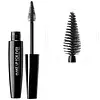What's inside
What's inside
 Key Ingredients
Key Ingredients

No key ingredients
 Benefits
Benefits

 Concerns
Concerns

No concerns
 Ingredients Side-by-side
Ingredients Side-by-side

Water
Skin ConditioningParaffin
PerfumingCI 77499
Cosmetic ColorantPolybutene
Cera Alba
EmollientBis-Diglyceryl Polyacyladipate-2
EmollientPalmitic Acid
EmollientStearic Acid
CleansingTriethanolamine
BufferingVp/Eicosene Copolymer
Acacia Senegal Gum
MaskingCopernicia Cerifera Wax
Euphorbia Cerifera Wax
Hydroxyethylcellulose
Emulsion StabilisingSilica
AbrasivePhenoxyethanol
PreservativeCrambe Abyssinica Seed Oil
Skin ConditioningCaprylyl Glycol
EmollientButylene Glycol
HumectantAlgin
MaskingHydrolyzed Rhodophyceae Extract
BHT
AntioxidantSerine
MaskingWater, Paraffin, CI 77499, Polybutene, Cera Alba, Bis-Diglyceryl Polyacyladipate-2, Palmitic Acid, Stearic Acid, Triethanolamine, Vp/Eicosene Copolymer, Acacia Senegal Gum, Copernicia Cerifera Wax, Euphorbia Cerifera Wax, Hydroxyethylcellulose, Silica, Phenoxyethanol, Crambe Abyssinica Seed Oil, Caprylyl Glycol, Butylene Glycol, Algin, Hydrolyzed Rhodophyceae Extract, BHT, Serine
Ingredients Explained
These ingredients are found in both products.
Ingredients higher up in an ingredient list are typically present in a larger amount.
Caprylyl Glycol is a humectant and emollient, meaning it attracts and preserves moisture.
It is a common ingredient in many products, especially those designed to hydrate skin. The primary benefits are retaining moisture, skin softening, and promoting a healthy skin barrier.
Though Caprylyl Glycol is an alcohol derived from fatty acids, it is not the kind that can dry out skin.
This ingredient is also used as a preservative to extend the life of products. It has slight antimicrobial properties.
Learn more about Caprylyl GlycolCera alba is beeswax, or the wax used by bees to make honeycombs. It is a texture-enhancer and emollient. A study from 2003 found beeswax to be a stronger emollient than ingredients such as petroleum jelly.
As an emollient, beeswax helps hydrate the skin by creating a barrier on top. This barrier traps moisture in.
Emulsifiers help prevent ingredients from separating. This helps create consistent texture.
The structure of beeswax is mainly long-chain alcohols and the esters of fatty acids.
There are three types of beeswax: yellow, white, and absolute. Yellow is pure beeswax taken from the honeycomb. White beeswax is created by filtering or bleaching yellow beeswax. Absolute beeswax is created by treating beeswax with alcohol. Beeswax used in cosmetics are purified.
Beeswax has been used throughout history and even in prehistoric times. Some common uses for beeswax still used today are making candles, as a waterproofing agent, and polish for leather.
Learn more about Cera AlbaCi 77499 is also hydrated iron III oxide. It is created from mixing red and black iron oxides. This helps give shades of darkness to a product.
Iron III oxides are classified as inorganic chemicals for coloring.
Water. It's the most common cosmetic ingredient of all. You'll usually see it at the top of ingredient lists, meaning that it makes up the largest part of the product.
So why is it so popular? Water most often acts as a solvent - this means that it helps dissolve other ingredients into the formulation.
You'll also recognize water as that liquid we all need to stay alive. If you see this, drink a glass of water. Stay hydrated!
Learn more about Water